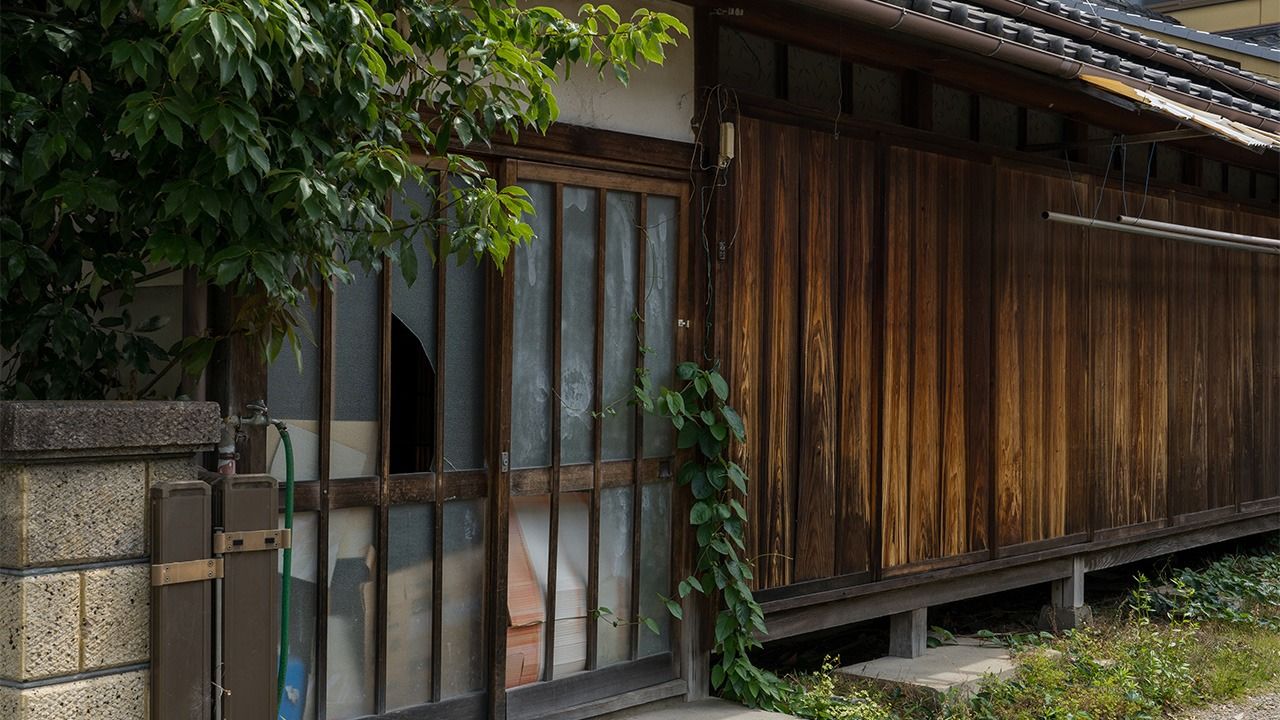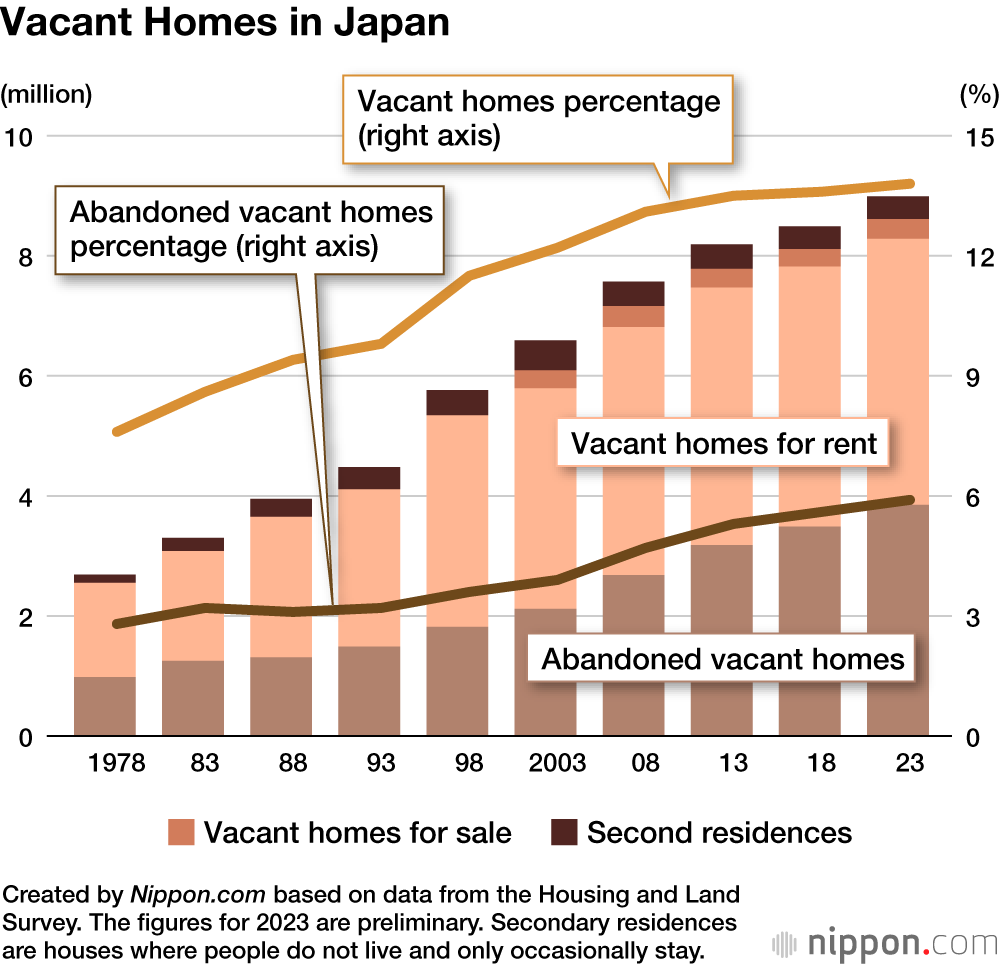
Number of Vacant Homes in Japan Reaches Record 9 Million
Society- English
- 日本語
- 简体字
- 繁體字
- Français
- Español
- العربية
- Русский
As of October 1, 2023, the number of vacant homes in Japan had increased by 507,000 from the previous survey in 2018 to a record 9.0 million, according to the Ministry of Internal Affairs and Communications. This number has doubled over the 30 years since 1993, when there were 4.5 million vacant homes. The total number of homes in Japan increased by 2.6 million to 65.0 million, due to a rise in the number of households. Of those, 13.8% were vacant, with both these figures the highest on record.
Surveys have been conducted every five years since 1948. The latest survey looked at 3.4 million homes and households to gauge the nationwide situation, covering habitable residences, while excluding vacant homes that were in danger of collapsing.
The key reason for the increase in vacant homes is the number of abandoned properties that are not for rent or sale, nor intended for use as a holiday home. A rise in this type of home from the previous survey of 366,000 took the number to 3.9 million, accounting for more than 72% of the overall increase. They also made up 42.8% of all vacant homes, with a continuous increase seen from 2003, when they were at 32.1%.
With nuclear families becoming the norm, it seems that after parents living far away move to nursing homes or pass away, those families find it difficult to dispose of the homes, so leave them vacant.
By prefecture, Wakayama and Tokushima had the highest percentage of vacant homes with 21.2%, followed by Yamanashi with 20.5%. Percentages for abandoned vacant homes tended to be higher in western Japan, including Kagoshima (13.6%), Kōchi (12.9%), Tokushima and Ehime (12.2% each), and Wakayama (12.0%).
(Translated from Japanese. Banner photo © Pixta.)

